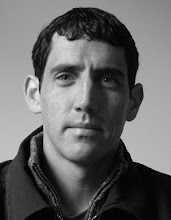But the first stories I tried to write suffered from the opposite problem. All that happened was one thing after another, but with no meaningful change taking place. They were like stenographer's account of courtroom events, but less interesting.
Janet Burroway diagnoses this earlier problem with writing by making the distinction between movement and action. Of course, this is to an certain extent an arbitrary choice of words -- I actual reversed their meaning when I first encountered her usage in this context -- but the distinction is important.
Basically, the problem with my earlier stories was a lack of action. There was movement, but not action. The characters were doing things, but their was no drama or significance to the things they were doing. Burroway writes:
The significant characters of a story must be both capable of causing an action and capable of being changed by it...Some force outside the the character presents itself in the form of information or accident or the behavior of others or the elements. The unknown becomes known, and then the discoverer must either take action or deliberately not take action, involving the reader in the tension of the narrative query: and then what happens?
Every story is a pattern of change (events connected, as the author E.M. Forster observed, primarily by cause and effect) in which small and large changes are made through decision and discovery.One important difference then between movement and significant action is that action creates tension -- the reader anticipates action, understands or feels its necessity (remember that inaction is a form of action once a decision must be made.) Burroway abstracts to call this a process of discovery and decision.
She analyzes passages in which movement is used to characterize and set the scene, and then either a discovery or a decision or both are interjected to create anticipation.
For instance:
Bob boarded the train to Newark, putting his rolling suitcase on a storage rack near the door.
So far we've got movement that establishes character and scene (albeit briefly). Then we get a significant discovery:
Bob walked along the car looking for his seat number. When he came to his seat, an elderly woman was sitting in it. He double checked his ticket. It was the right seat.
This generates anticipation. What will Bob do? Will he confront this fragile woman? Will he move on and find an empty seat?
Bob takes makes a decision and takes action:
Bob looked around the train. Numerous seats remained empty. The train was scheduled to leave in 30 seconds. "Excuse me, ma'am, I believe you're in my seat."
Bob's decision to confront the woman both resolves a previous tension (What will he do?) and generates a new tension (Why did he do it, and what will happen next?). It also tells us something about Bob: that sitting in the correct seat for him is important enough that he would consider making a little-old lady move. Also, he did it in a brusque manner -- another choice -- that helps to characterize him (we don't think his manner is very polite, do we?).
Larry David comes to mind. In Seinfeld and Curb Your Enthusiasm, David's characters make a series of decisions the dig them further and further into a comic hole so that seemingly small decisions have dramatic import - think George on Seinfeld and David's eponymous character on CYE. Which brings us to the related concept, which Burroway discusses, of how tension in a story builds.
The cycle of discovery and decision, decision and discovery, ratchets up the level of tension, which could be defined as the reader's desire to know what happens next. The actions, Burroway tells us, are a window into the soul.
...it turns out that the internal or mental moment of change is where the action lies. Much movement in a story is mere event, and this is why descriptions of actions, like stage directions in a dull play, sometimes add little or nothing. When the wife picks up a cup of coffee, that is mere event. If she finds that the lipstick on the cup is not her shade, that is a dramatic event, a discovery; it makes a difference. She makes a decision to fling it at the woman with the Cherry Ice mouth. Flinging it is a action, but the dramatic change occurs with the second character's realization (discovery) that she has been hit -- and so on.




4 comments:
Chris,
Another fascinating post!
Regarding stenographer-like writing, it too can be entrancing. I've always thought Camus, and much of Kafka sounded like a stenographer taking dictation in a courtroom from a defendent who hadn't slept well in his cell. Yet it is bogglinly engaging.
Yet, I'm still glad that most writers don't write like them.
I have found your posts very useful, so I am going to stick a link on my blog to this one. I don't often do that.
your blog is great
and i am going to stick a link on my blog to this one too. very very useful. come visit my blog
Hi Doug and Ruy,
Thanks for the kind words - and the links. Doug, thanks for reminding me of Camus; yet another writer I haven't read in years. I hadn't thought about him in that way, probably because I haven't read him since I've been thinking on these things. I'm going to add a friends section soon and I'll add links to both your blogs.
Ruy, unfortunately I'm not going to be able to fully enjoy yours because my Spanish is terrible (though I'm studying!).
Post a Comment